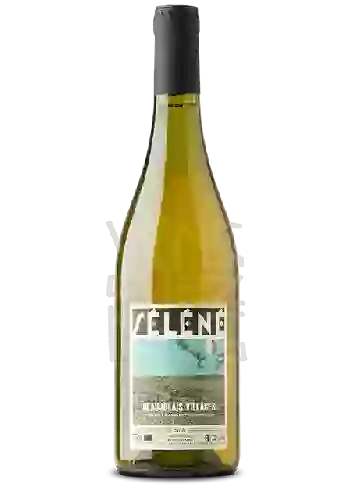The Domaine Valette of Burgundy of Mâconnais

The Domaine Valette is one of the world's great estates. It offers 17 wines for sale in of Burgundy to come and discover on site or to buy online.
Looking for the best Domaine Valette wines in Burgundy among all the wines in the region? Check out our tops of the best red, white or effervescent Domaine Valette wines. Also find some food and wine pairings that may be suitable with the wines from this area. Learn more about the region and the Domaine Valette wines with technical and enological descriptions.
How Domaine Valette wines pair with each other generally quite well with dishes of pork, rich fish (salmon, tuna etc) or vegetarian such as recipes of pan-fried black pudding with apples, pasta salmon - fresh cream or quiche with bacon and gruyère cheese.
On the nose the white wine of Domaine Valette. often reveals types of flavors of cream, vanilla or honey and sometimes also flavors of dried apricot, pineapple or grapefruit. In the mouth the white wine of Domaine Valette. is a powerful.
Bourgogne is the catch-all regional appellation title of the Burgundy wine region in eastern France ("Bourgogne" is the French name for Burgundy). Burgundy has a Complex and comprehensive appellation system; counting Premier Cru and Grand Cru titles, the region has over 700 appellation titles for its wines. Thus, Burgundy wines often come from one Vineyard (or several separate vineyards) without an appellation title specific to the region, Village or even vineyard. A standard Burgundy wine may be made from grapes grown in one or more of Burgundy's 300 communes.
Unlike Burgundy's village appellations, which specialize in red or white wines or a combination of both, Burgundy covers red, white and rosé wines, and even Sparkling wines as in the case of Crémant de Bourgogne and Bourgogne Mousseux. Each Burgundy appellation may be followed by the Color of the wine (white, red or rosé), as appropriate, and if not already implied by the appellation itself. Red Burgundy is produced almost exclusively from Pinot Noir grapes and is Distinguished from White Burgundy, which is produced from white grapes (mainly Chardonnay). A key difference between Burgundy wines and those produced under the Village, Premier Cru and Grand Cru appellations is that the grape variety used in the wine can be indicated on the label.
This has contributed to the perception and marketing of Burgundy wines in foreign markets, where a Burgundy Pinot Noir or a Burgundy Chardonnay is much easier to sell. To accommodate the different styles of wine produced in Burgundy, there are six key Burgundy appellations: Burgundy itself, Burgundy Aligoté (limited to the named white grape variety with other regulations distinguishing it from the generic regional appellation), "Bourgogne Mousseux", "Bourgogne Grand Ordinaire", Bourgogne Passe-tout and Crémant de Bourgogne. There are even two appellations dedicated to the region's brandies: Eau-de-vie de Vin de Bourgogne and Eau-de-vie de Marc de Bourgogne. Some of the above appellations may be suffixed with the name of the sub-region, village or vineyard where the grapes were grown.
How Domaine Valette wines pair with each other generally quite well with dishes of pork, shellfish or vegetarian such as recipes of beef tagine with vegetables, slivers of squid with tomato or mushroom, bacon and gruyere quiche.
In the mouth the pink wine of Domaine Valette. is a with a nice freshness.
A very ancient table grape, it is mentioned in the Bible. Luigi and Alberto Pirovano of Vaprio d'Adda used it in many of their crosses. - Synonyms: neg(u)elescol, giant of Palestine, white grape of Jerusalem, eparce or eparse, yellow olivette with small berries, grape of Jericho (for all the synonyms of the grape varieties, click here!)
Planning a wine route in the of Burgundy? Here are the wineries to visit and the winemakers to meet during your trip in search of wines similar to Domaine Valette.
Interspecific cross between the Clinton and the frankenthal or black-hamburg obtained in 1859 by Charles Arnold of Paris in Canada (Brant County in Ontario). In France, it is one of the six hybrids prohibited since 1935 (included in the European regulations): the Clinton, the Herbemont, the Isabelle, the Jacquez, the Noah and the Othello. It has been used as a sire in several crosses, notably by Couderc and Seibel. Today, the Othello has practically disappeared.
Understand the hierarchy of Burgundy wine appellations in less than a minute! Our social media: Facebook: https://www.facebook.com/BourgogneWines/ Twitter: https://twitter.com/BourgogneWines/ Instagram: https://www.instagram.com/vinsdebourgogne/ LinkedIn: https://www.linkedin.com/company/bivb Find out more on our website: https://www.bourgogne-wines.com/ #BourgogneWines #Bourgogne ...
Understand the hierarchy of Burgundy wine appellations in less than a minute! Our social media: Facebook: https://www.facebook.com/BourgogneWines/ Twitter: https://twitter.com/BourgogneWines/ Instagram: https://www.instagram.com/vinsdebourgogne/ LinkedIn: https://www.linkedin.com/company/bivb Find out more on our website: https://www.bourgogne-wines.com/ #BourgogneWines #Bourgogne ...
In line with our previous videos « The Climats of Chablis seen from the sky » and « The vineyards of Bourgogne, seen from the sky » », the Bourgogne Wine Board (BIVB) and the Union des Producteurs de Vins de Mâcon offer you a new stroll at the heart of the Mâcon terroir. Established in 1937, this Régionale appellation is divided into three levels: – The first level is known as white, red or rosé Mâcon. The grapes used can come from all around the Mâconnais. – The second level is name ...
A taste considered a defect, characterized by an unpleasant astringency and bitterness, brought by the stalk during the vinification process. In order to avoid it, destemming before vinification is a common practice.